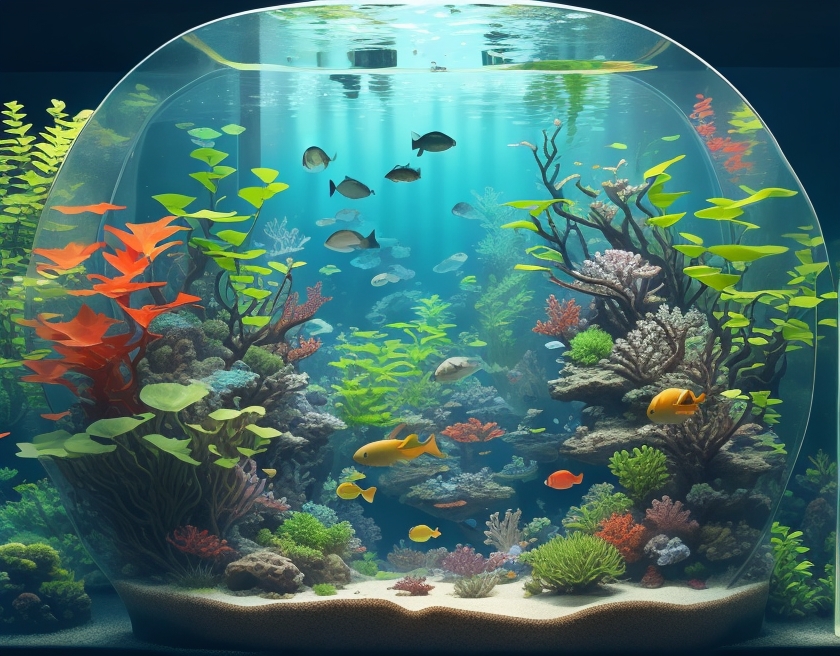Are you an aquarium owner looking to cultivate a healthy and balanced environment?
Nitrifying bacteria play an essential role in the nitrogen cycle and must be managed properly.
In this article, you’ll learn all about nitrifying bacteria, how to cultivate them, and how to ensure your aquarium remains in balance.
With everything you need to know in one place, you’ll be well on your way to creating the perfect aquatic environment for your fish!
The Underlying Science: Nitrification in Aquariums
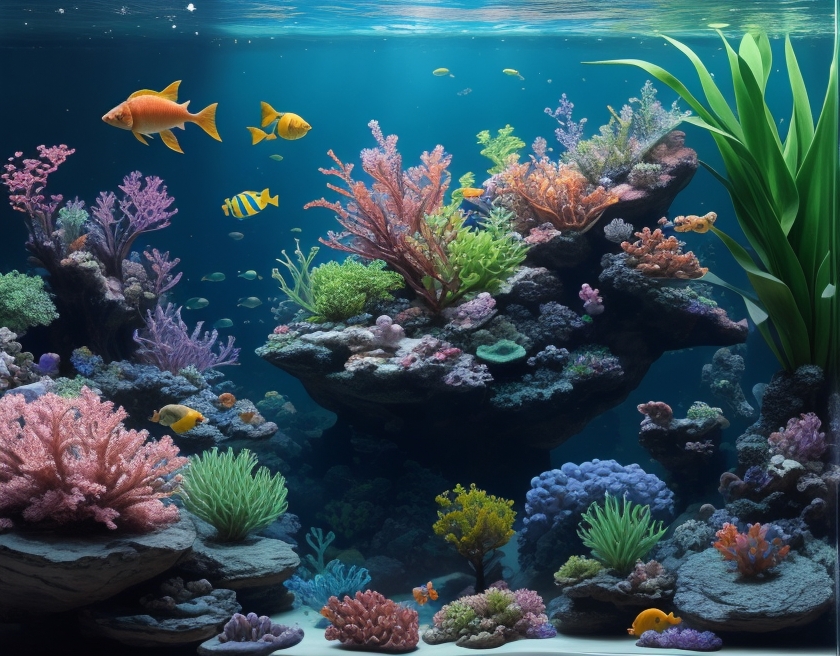
Understanding the nitrogen cycle and monitoring ammonia and nitrite levels in your aquarium are essential for maintaining a healthy environment for your fish.
Nitrification is the key process that converts ammonia into nitrate, so it’s important to understand how nitrifying bacteria work and the factors that affect their growth.
Let’s take a closer look into the science of nitrification in aquariums.
Understanding the Nitrogen Cycle
By understanding the nitrogen cycle, you can better appreciate the role of nitrifying bacteria in aquarium nitrification and aquatic balance.
Nitrifying bacteria are beneficial bacteria that convert ammonia to nitrite and nitrite to nitrate in a fish tank. This process is known as nitrification, and the resulting nitrates are used by aquatic plants as a form of nutrition.
Nitrification also cleans the water, creating a healthier environment for fish and other aquatic life. Nitrogen cycle is a cycle of processes that convert nitrogen from the atmosphere into nitrates and other compounds, and back to the atmosphere.
Nitrifying bacteria are an essential part of this cycle, and their presence is crucial for a healthy aquarium.
Monitoring Ammonia and Nitrite Levels
By monitoring ammonia and nitrite levels, you can better understand the science behind nitrification in aquariums. Nitrification is the process in which nitrifying bacteria convert ammonia into nitrite and then nitrite into nitrate, completing the nitrogen cycle in the aquarium. Nitrosomonas are the bacteria responsible for the oxidation of ammonia, while nitrite bacteria such as Nitrobacter are responsible for the oxidation of nitrite. Beneficial heterotrophic bacteria are also present in the aquarium water and help break down organic material, furthering the nitrogen cycle.
In order to ensure the nitrogen cycle is working, ammonia levels in the aquarium need to be monitored. High levels of ammonia can be toxic to fish and other aquatic life, while low levels can indicate a shortage of nitrifying bacteria. Additionally, oxygen levels must be taken into account as nitrifying bacteria require oxygen for their metabolic processes.
Regular water changes can help prevent a buildup of toxins and replenish beneficial bacteria. With proper monitoring, you can ensure the nitrifying bacteria in your aquarium remain healthy and balanced.
Cultivating Beneficial Bacteria in Aquariums

Maintaining a thriving bacterial colony is essential for a healthy aquarium. To achieve this, you must understand how to properly cultivate beneficial bacteria and how tank maintenance affects their growth.
Keep reading to learn more about maintaining a successful bacterial colony in your aquarium.
Maintaining a Thriving Bacterial Colony
You can maintain a thriving bacterial colony in your aquarium by understanding the factors that affect nitrifying bacteria and taking the necessary measures to optimize conditions for nitrification. To do this, you should:
- Ensure a nitrogen cycle is established and maintained, as fish waste is key to providing the food source for the bacteria to live and grow.
- Introduce beneficial bacteria when setting up a new tank.
- Monitor and control water parameters to ensure optimal conditions for the bacteria.
- Consistently practice aquarium maintenance to keep the environment healthy for nitrifying bacteria.
The Symbiotic Interplay between Aquatic Life and Bacteria
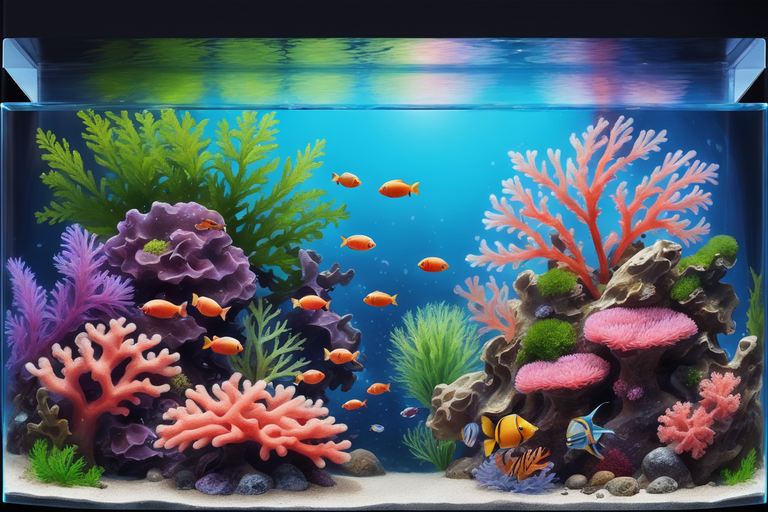
You may have heard of nitrification before, but do you know what role bacteria play in the process?
It’s fascinating to explore how fish waste is converted into nitrate and how oxygen levels and other factors influence bacterial activity.
Let’s take a closer look at the symbiotic interplay between aquatic life and bacteria!
The Journey from Fish Waste to Nitrification
Understanding the symbiotic interplay between aquatic life and bacteria is key to maintaining the nitrification process in aquariums. This process starts with the conversion of fish waste to ammonia. To cycle an aquarium, aquarists must ensure that the bacteria responsible for the nitrogen cycle remain healthy.
This includes understanding the need for regular water changes to replenish the buffering capacity of tank water. It also involves monitoring oxygen and temperature levels in the tank.
Additionally, the presence of anaerobic bacteria, such as in a new aquarium, can impact the species of bacteria present.
To ensure the long-term health of nitrifying bacteria in a freshwater aquarium, proper maintenance is essential.
Oxygen Levels and Its Impact on Bacterial Activity
It’s important to understand the symbiotic interplay between aquatic life and bacteria when it comes to oxygen levels and its impact on bacterial activity. Oxygen is essential for the growth of nitrifying bacteria, but too high or too low levels can reduce bacterial activity. Inorganic salts, tank to cycle, and cold water tanks can all affect nitrification rates.
Nitrifying bacteria thrive in established aquariums with regular maintenance and the right oxygen levels. A decrease in oxygen levels in the environment can affect bacterial metabolism and reduce growth rate, while oxygen promotes oxidation and too much can be detrimental.
Proper tank maintenance, including regular water changes, cleaning of filters, and monitoring of water parameters, is important for the long-term health of nitrifying bacteria.
| Factor | Impact on Nitrifying Bacteria |
|---|---|
| Oxygen Levels | Essential for growth; too high/low reduces activity |
| Inorganic Salts | Affects nitrification rates |
| Tank to Cycle | Affects nitrification rates |
| Cold Water Tanks | Affects nitrification rates |
| Established Aquarium | Thrives with regular maintenance and the right oxygen levels |
Challenges and Solutions in Harnessing Nitrifying Bacteria
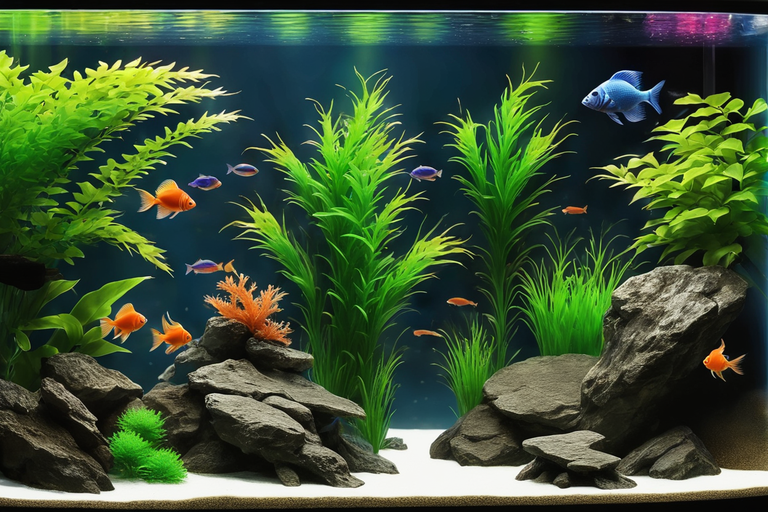
Harnessing nitrifying bacteria in an aquarium environment can be challenging due to inhibitory factors, such as ammonia, oxygen levels, and debris buildup. To ensure that these bacteria can thrive, aquarium maintenance is key. This includes regular water changes, filter cleaning, and monitoring of water parameters.
By performing regular water changes, excess ammonia and other harmful substances can be removed, preventing them from inhibiting the growth of nitrifying bacteria.
Cleaning the filter is also important as debris buildup can clog the filter media, reducing the surface area available for bacterial colonization. Regular filter cleaning ensures that the nitrifying bacteria have enough space to grow and thrive.
Monitoring water parameters such as ammonia, nitrite, and nitrate levels is essential to ensure the optimal conditions for nitrifying bacteria. By keeping these parameters within the appropriate range, the bacteria can carry out their essential function of converting toxic ammonia into less harmful substances.
Overcoming Inhibitory Factors
You can overcome the challenges of harnessing nitrifying bacteria by understanding the inhibitory factors associated with them. Poor tank maintenance, such as not changing the water regularly, can lead to the accumulation of toxins and waste products, which can harm nitrifying bacteria.
Overfeeding can cause an excess of organic matter in the tank, which can be inhibitory to nitrifying bacteria. Chemical additives, such as medications or certain water conditioners, can also affect the well-being of nitrifying bacteria. Finally, adding too many fish or too much fish food can cause bacteria to take in more than they can process, leading to their death.
Proper tank maintenance, including regular water changes, cleaning of filters, and monitoring of water parameters, is crucial for the long-term health of nitrifying bacteria. With the right conditions, strains of nitrifying bacteria can live for several weeks in the tank after being added to the tank.
With this knowledge, nitrifying bacteria can be sustained in your tank, leading to a balanced aquarium.
Aquarium Maintenance for Sustained Nitrification
How can you maintain your aquarium for sustained nitrification?
Adding nitrifying bacteria to the aquarium helps convert ammonia to nitrate, and there are a variety of nitrifying bacteria products on the market. As well, beneficial bacteria cultures can be added to the aquarium to ensure the presence of true nitrifying bacteria cells. There are various types of bacteria, including Nitrosomonas, Nitrobacter, and Nitrospira, which are the main species of nitrifying bacteria.
Additionally, other species of beneficial bacteria can be added to the aquarium to promote the nitrogen cycle. Regular water changes and proper tank maintenance, such as cleaning filters and monitoring water parameters, are also essential for the well-being of nitrifying bacteria.
Beyond nitrification, there are further measures to explore other beneficial bacteria.
Beyond Nitrification: Exploring Other Beneficial Bacteria
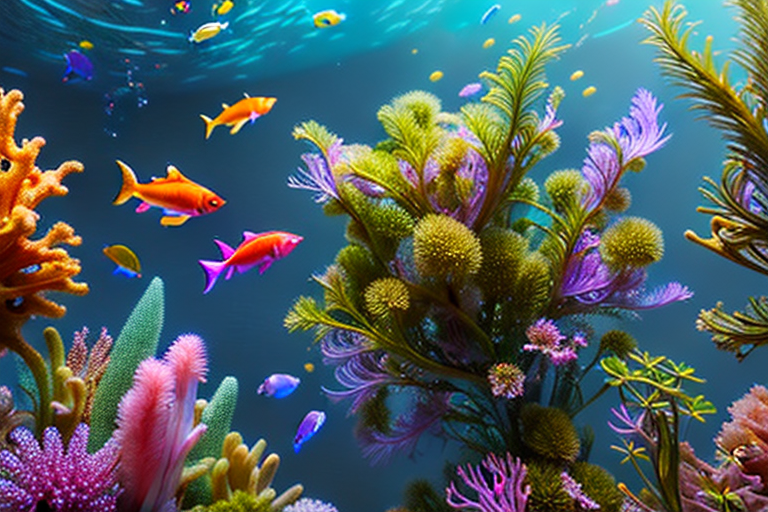
You might be familiar with the process of nitrification in aquariums, which is essential for maintaining water balance and health.
But did you know that other bacteria, such as heterotrophic and anaerobic species, also play an important role in aquariums?
These bacteria can be harnessed and managed for the best aquarium environment.
Heterotrophic and Anaerobic Bacteria
Moreover, heterotrophic and anaerobic bacteria are also essential for aquarium balance, as they help break down organic matter and convert it to usable compounds. Bacteria in aquariums can live for several months, and must be replenished with inorganic salts.
Nitrobacter bacteria are important for nitrification rates, while heterotrophic bacteria consume organic matter and produce beneficial by-products.
Old tank water contains anaerobic bacteria, which help break down nitrogenous waste and reduce nitrification rates.
This complex ecosystem must be maintained to ensure the health and longevity of nitrifying bacteria.
The Future of Bacterial Cultures in Aquarium Management
Now, in addition to nitrification, you can explore other beneficial bacteria for aquarium management. When introducing new fish, these bacteria play a significant role in maintaining a healthy aquarium.
Bacteria must be present for the nitrogen cycle to occur, and they can’t be added directly. Instead, the amount of beneficial bacteria in the water must be increased through normal aquarium maintenance. Once the bacteria reproduce, they’re responsible for the nitrogen cycle and play an important role in keeping the tank healthy.
Nitrifying bacteria can grow and colonize, but other bacteria in the tank must also be maintained. A colony of bacteria is necessary for a healthy tank, and proper maintenance is essential for the bacteria to thrive.
How does temperature affect nitrifying bacteria?
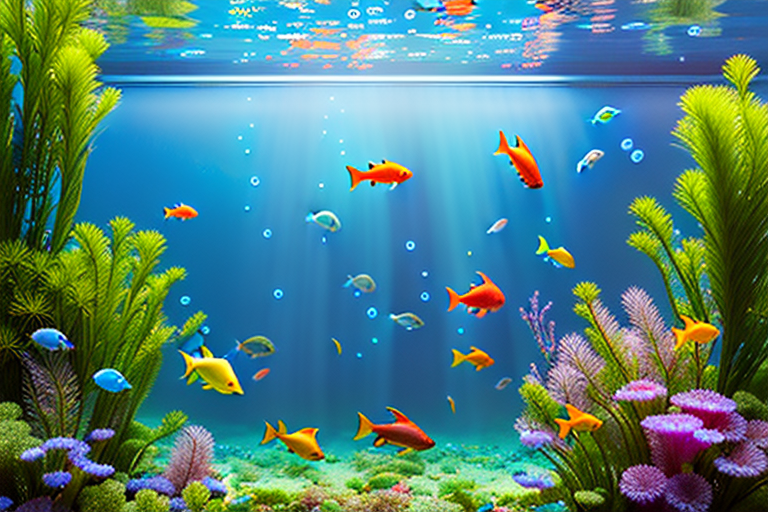
You’ll find that temperature plays an important role in the well-being of nitrifying bacteria. In aquariums, temperature affects the rate of nitrification, as well as the ability of beneficial bacteria to colonize the environment. Nitrifying bacteria are essential for the nitrogen cycle, as they convert ammonia to nitrates.
In saltwater aquariums, anaerobic bacteria cells are also affected by temperature changes. Temperature can also impact the aquarium filtration system, as nitrifying bacteria are sensitive to temperature fluctuations.
- Temperature affects the rate of nitrification in aquariums
- Nitrifying bacteria are essential for the nitrogen cycle
- Temperature can affect the ability of beneficial bacteria to colonize the environment
- Temperature changes can also impact anaerobic bacteria cells in saltwater aquariums
Frequently Asked Questions
How Long Does It Take for Nitrifying Bacteria to Colonize an Aquarium?
The time it takes for nitrifying bacteria to fully colonize an aquarium can vary, but generally, it takes around 2-6 weeks. During this period, the tank goes through a process called “cycling,” where beneficial bacteria establish and grow in the filter media, substrate, and other surfaces within the tank.
These bacteria convert toxic ammonia (produced by fish waste) into nitrite and then into less harmful nitrate through a process known as the nitrogen cycle. The cycling process is crucial for establishing a stable and healthy environment in the aquarium before adding fish or other aquatic animals.
Are Nitrifying Bacteria Beneficial in All Aquariums, or Only Certain Types?
Nitrifying bacteria are beneficial in all aquariums, regardless of the type. These bacteria play a crucial role in the nitrogen cycle, which is essential for maintaining water quality and the overall health of fish and other aquatic organisms.
Nitrifying bacteria convert toxic ammonia (produced by fish waste, uneaten food, etc.) into less harmful compounds such as nitrite and then nitrate through a process called nitrification. Ammonia and nitrite can be extremely harmful to aquarium inhabitants even at low concentrations, so having nitrifying bacteria present helps to keep these levels under control.
Whether you have a freshwater or saltwater aquarium, tropical or cold-water species; whether it’s heavily planted with live plants or not; nitrifying bacteria will still be beneficial. They help to establish biological filtration in the aquarium system, breaking down waste products and ensuring stable water parameters necessary for the well-being of the aquatic life.
What Are the Benefits of Introducing Other Beneficial Bacteria to the Aquarium?
Introducing other beneficial bacteria to the aquarium can improve the balance of the aquatic environment and help to maintain a healthy tank. They can help to break down toxins, provide food for fish, and promote better water quality.
Is It Necessary to Regularly Check the Water Parameters When Cultivating Nitrifying Bacteria?
Yes, it’s necessary to regularly check the water parameters when cultivating nitrifying bacteria. This helps ensure the well-being of the bacteria, preventing any buildup of toxins or waste products that can harm them.
Is It Possible to Over-Nitrify a Tank With Too Many Nitrifying Bacteria?
Yes, it’s possible to over-nitrify a tank with too many nitrifying bacteria. You can end up with excess ammonia and nitrate levels, which can be harmful to your fish. Regularly check water parameters and maintain proper tank care to avoid this.
Conclusion
You now have the knowledge to create and maintain a healthy aquatic environment for your fish and other aquatic life.
With the right balance of nitrifying bacteria, temperature, and other beneficial bacteria, you can ensure that your tank remains in balance and is a safe and healthy environment for your fish.
With this newfound knowledge, you’re well on your way to creating the perfect aquarium for your beloved fish.

